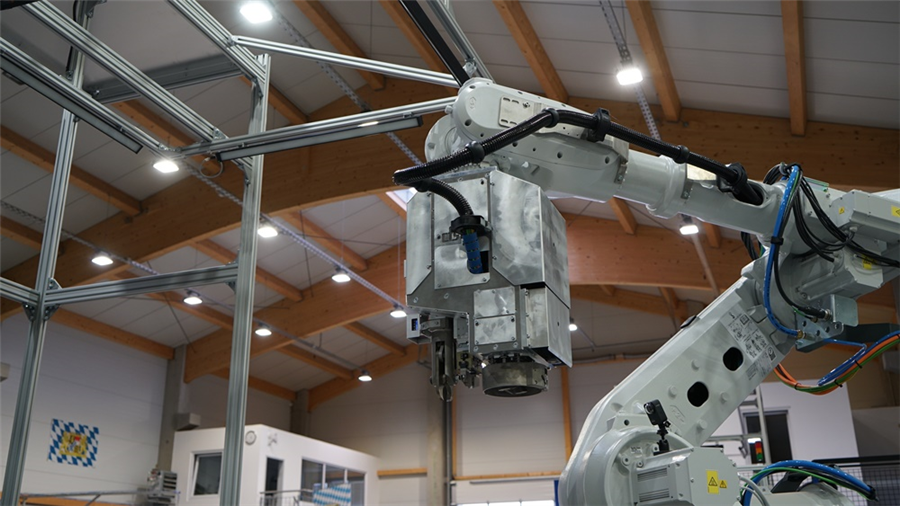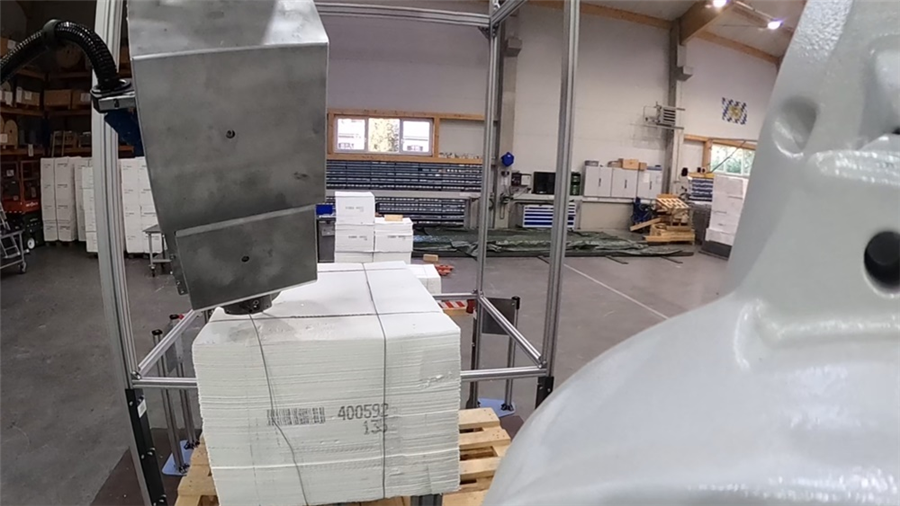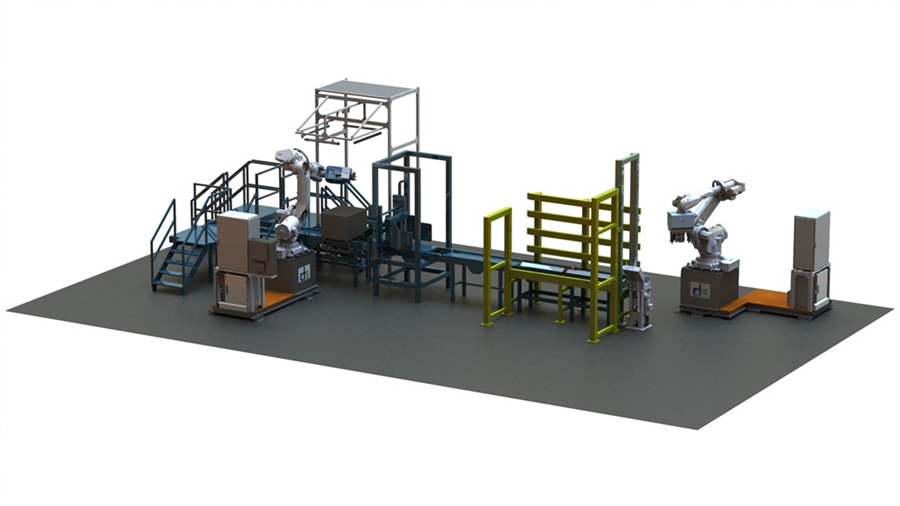NEWS
Robot solution automates the de-wiring of pulp bales
With a new robotic solution, the automation specialists at cts GmbH are optimizing pulp bale handling in the pulp and paper industry. Up to 90 pulp bales per hour can be automatically de-wired via a 6-axis robot on one or two independent lines. The flexible cts robot solution is available in two versions: The DWR-BC works with a camera system for wire detection, the DWR-BT works tactilely.
The processing time for a bale in a classic 2+1 wiring is significantly less than one minute with the cts robot solution DWR-BC. This allows a total of up to 90 bales per hour to be unwired and the loose wire to be rolled up to a coil for space-saving disposal. Especially for environments with very high performance and multi-shift operation, the use of fully automated solutions offers great advantages: The speed increase compared to manual processing is enormous and the cts systems enable efficient 24/7 use in bale feeding.
Robots increase efficiency and make work more flexible and safer
The robotic solutions from cts offer new possibilities compared to classic de-wiring solutions: This starts with the fact that the cts DWR-BC system adapts itself to different wiring of pulp bales without programming. This is made possible by the use of a camera system that detects the positions of the individual wires and transmits them to the robot. The robot also cuts at the top of the bales, which means they do not have to be turned. Another advantage of the mobility: equipped with an additional traversing axis and placed in the centre, it is therefore possible to de-wire in parallel on two independent lines. Immediately after the wires are cut, they are automatically wound into compact coils, thus further minimizing the risk of accidents for employees.
Could it be a little less?
For companies with lower capacity requirements, cts offers an alternative solution in the form of the DWR-BT robot, which works with tactile detection of the wires and programmable recipe selection for individual wire configurations. The output here is up to 45 bales per hour. If the de-wiring capacity needs to be increased later, it can be easily upgraded to the DWR-BC version by installing the camera system.
Both systems handle pulp bales up to 1000 millimeters long, 900 millimeters wide and 650 millimeters high - the supported conveying height is between 800 and 1150 millimeters. The bale weight can be up to 500 kilograms.
Low energy consumption, protection against contamination
Both cts systems work with purely electromechanical drives and require a connection capacity of only four kilowatts. Without pneumatics or hydraulics, the required footprint remains correspondingly small, and since no liquids such as hydraulic oil are necessary, the sensitive pulp is protected from contamination.
Uncomplicated team worker
The high degree of standardization makes secure anchoring to the parking space and commissioning uncomplicated and simplifies retrofitting of existing lines. Both bale de-wiring machines can also be combined with the PWR-U robot for fully automatic de-wiring of pulp bale units. In this combination, the degree of automation increases significantly once again.
Complete solution for fully automatic feeding before the end of the year
“Our two fully automated de-wiring solutions, DWR-U for units and DWR-BC/DWR-BT for bales, have given cts a perfect start in the pulp handling market,” explains Peter Mackinger, Head of Software Engineering at cts GmbH. “The two robotic solutions massively increase the productivity and flexibility of our customers' incoming materials. However, this was just the beginning for cts. We are currently working on a smart and for the industry trend-setting overall solution for the complete process of pulp handling. cts will present it later this year and open up completely new ways of automation from incoming goods to the pulper or shredder for industrial companies and their plant manufacturers.”










